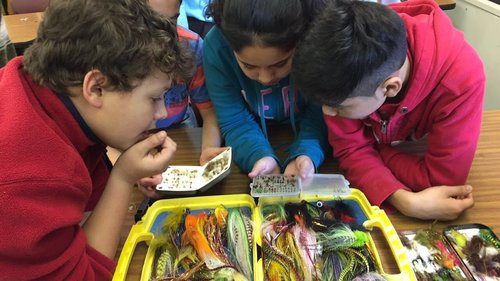

Learning about Amphibians & Aquatic Insects
BRDC has been busy with education programs, working with Galax Middle School, Fries School, Fairview Elementary, Grayson Highlands, Independence Elementary.
Grayson County's fourth grade students participated in the Natural Heritage Program with an emphasis on salamanders, toads, and frogs. Students learned about salamanders commonly found in the Blue Ridge.

Students Study Whitetail Deer impact on forest understory
Through the cooperation of Matthews State Forest and forester Zack Olinger, and along with Alan Webb (Ag teacher), and Rachelle Rasco (stem lab manager) from Carroll County High School, BRDC initiated a research project at one of the two deer exclosure sites on MSF. This project is expected to encompass not only this fall semester, but also a spring 2016 return visit or two for further comparisons.